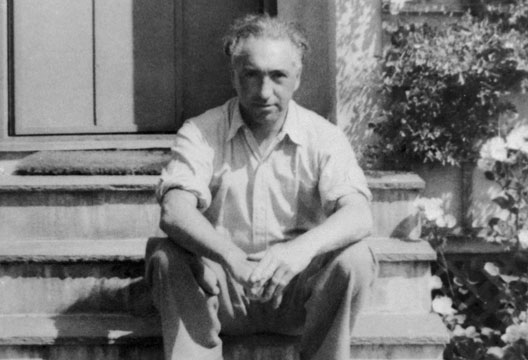Why were the Nazi’s, the 1950s American government, and two Catholic Popes so afraid of Wilhelm Reich? I must admit, he looks a bit crazy, an intense stare in his eyes and wild hair like Albert Einstein, but even Einstein rejected his inventions, the “orgone accumulator” (for harnessing orgone energy) and his “cloudbuster” (for seeding clouds), as ludicrous. Reich had a nervous breakdown and eventually died in 1957 in an American prison. Twenty years after the Nazi’s burned his books, Reich’s books and equipment were burned and destroyed on instruction of the United States Food Administration. Why were they so afraid?
In short, he claimed that better orgasms could cure many ills of society. Okay, it sounds silly, but then it also speaks of bodies, or more accurately – desiring bodies. Reich, also called the “Jewish pornographer” by the Nazi’s dedicated his life “to exploring the nature of the orgasm and taking a radical ‘hands-on’ approach to psychoanalysis to treat both mind and body… Ten years after his death, the slogan of the 1960s counter-culture ‘Make Love Not War’ summed up his philosophy in just four words” (David Bramwell). He wanted nothing less than a sexual revolution, one which could liberate us from the uptight, aggressive authoritarianism of politics and state. Reich was baptised “the godfather of the sexual revolution“. He coined the phrase in the 1930s in order to illustrate his belief that a true political revolution would be possible only once sexual repression was overthrown. In 1936 he published his book, “Die Sexualität im Kulturkampf” ( later published in English as “The Sexual Revolution”), with a subtitle “for the socialist restructuring of humans”,
He was born in Austria, studied medicine, raised through the psychoanalytical ranks, became a star pupil of Sigmund Freud and then fell out with Freud – over orgasms. For Freud the libido was an unruly beast. Reich believed the opposite, perceiving the rise of fascism in Europe in the 1920s and 1930s as a direct result of repressed sexual desire, sublimated into hatred and war (Christopher Turner). For Reich the body language adopted by those in the military says all we need to know about sexual, psychological and emotional repression – stiff controlled body movements, tight pelvis, rigid jaw, unquestioning obedience and stifled emotions. Reich saw fascism as the ‘frenzy of sexual cripples’. To him bigotry, violence and hatred all stem from a longing for love (Bramwell). What matters is how much we can let ourselves go during sex to achieve full-body orgasm.
He rejected the ‘talking cure’. For Reich, treatment had to transcend words. He broke the golden rule of psychoanalysis – never touch a patient – and developed physical manipulation techniques to enable emotional release. These techniques stemmed from his belief that unresolved conflict leaves a remnant of muscular tension; and as muscles attach to tendons, which attach to bones, the growing skeletal system of a child is fenced in by the patterns of tension from unresolved conflict. Thus, the psychological history of a person is present not just in the mind, as Freud and Jung believed, but in the body too (Bramwell).
He fled Nazi Germany for Norway under a false name, then to Sweden and eventually to America. In 1947, Harper’s magazine introduced Reich to mainstream Americans as the leader of “a new cult of sex and anarchy” that was blooming along the west coast where bohemians lived in shacks. The Food and Drug Administration began investigating Reich for making fraudulent claims and spent nearly $2m investigating and prosecuting Reich. He became the scapegoat for the new morality, was imprisoned and died 8 months into his sentencing.
As recently as April 2019, ex Pope Benedictus Benedict XVI, blamed the sexual revolution for the suffering in Catholic moral theology, rendering the Church defenceless against changes in society and leading to “homosexual cliques” in seminaries (see my previous blog https://bodytheology.co.za/2019/05/10/talking-about-a-revolution/). It seems as if there is a disconnect between church and the body, especially a body that desires. We also live in societies where we are becoming more afraid to touch. Bodies need healthy and appropriate touch to flourish – and the needs of bodies should also be embraced in way we do therapy.
During the 1968 student revolution, Reich’s words were written in graffiti on walls. In Berlin copies of his “The Mass Psychology of Fascism” were hurled at police and at the University of Frankfurt, students were advised to “Read Reich and Act Accordingly”. I see signs of fascism. We should read Reich again.
